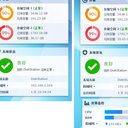Sevoflurane postconditioning attenuates cerebral ischemia-reperfusion injury via protein kinase B/nuclear factor-erythroid 2-related factor 2 pathway activation.
Kata kunci
Abstrak
Oxidative damage plays a critical role in many diseases of the central nervous system. This study was conducted to determine the molecular mechanisms involved in the putative anti-oxidative effects of sevoflurane against experimental stroke. Focal cerebral ischemia was performed via 1h of middle cerebral artery occlusion followed by reperfusion. At the onset of reperfusion, rats were subjected to postconditioning with sevoflurane or without sevoflurane for 1h. Neurological deficit score was assessed at different time points after reperfusion. Cerebral infarct volume, oxidative stress level and the binding activity of Nrf2 to antioxidant response element were assessed, meanwhile the expression of nuclear factor-erythroid 2-related factor 2 (Nrf2), quinine oxidoreductase 1 (NQO1), protein kinase B (Akt) and phosphor-Akt was examined by Western blot at 72h after reperfusion. Sevoflurane postconditioning administration significantly reduced neurological deficit score, infarct volume and oxidative stress levels, while increased the expression of phosphorylation Akt, NQO1, Nrf2 and the binding activity of Nrf2 to ARE in middle cerebral artery occlusion rats. These neuroprotective effects were all suppressed by LY294002, a selective PI3K blocker. Taken together, these findings provided evidence that sevoflurane postconditioning protects brain against ischemic/reperfusion injury, and this neuroprotective effect involves the Akt/Nrf2 pathway.





